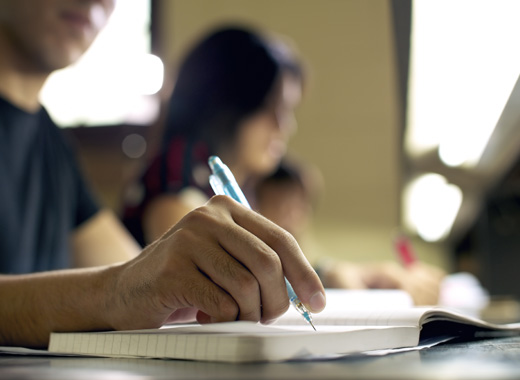The Single Best Way to Become a Stronger Reader

For students truly determined to bolster their reading scores, there is one surefire method of studying that is guaranteed to help increase reading speed, improve comprehension, and expand vocabulary — three things that are almost certain to lead to higher scores on the SAT Reading section. The unfortunate news, however, is that it is also the tip that no student wants to see: read more. Obviously, reading SAT passages can be especially advantageous but reading almost any type of content can translate into stronger reading skills for most students. In order to build these skills my advice to students is simple: read more often, hone your reading skills, and work towards becoming a proficient reader across a variety of different topics.
My experience has been that many students read only the minimum amount required by their studies. However, reading, much like hitting a baseball or cooking an omelet, is a skill which requires consistent practice in order to improve. Students who read more often will find that they read faster, comprehend more, and are better able to understand language in context (a topic that is directly tested on the SAT). In contrast, should students go extended periods of time without reading, such as over summer break, their reading skills will not only fail to improve, they will actually begin to diminish.
In addition to simply reading more, students can practice “active reading”, a style of reading with emphasis on comprehension and engagement. To improve in these areas, students should focus on developing good reading habits, such as underlining any words or phrases they don’t understand and pausing periodically throughout the reading to summarize what they’ve read and note if they have any questions or responses. This type of practice may seem frustrating at first as reading will take longer and students will be forced to acknowledge the areas in which they struggle. However, over time, these practices will become second nature and ultimately save time. Instead of reading the same portions of a passage multiple times, students will be able to accurately capture the main idea on their first try. Additionally, active reading will help expand students' vocabulary not only through looking up any words or phrases they cannot define while reading, but also by furthering their ability to decode words' meanings through the use of context clues.

As students build their reading skills, I would also encourage them to branch out and practice reading across different subjects. The SAT Reading section includes a fiction passage excerpted from U.S. or international literature, two social studies passages (one on social science and another taken directly from a historical document), and two science passages. Although no background knowledge is necessary to do well on any of these passages, building a familiarity with the language and style associated with these subjects can be extremely helpful. In addition to working with test prep materials, students can find many of the same types of texts referenced on the exam through a number of online sources. For students building up their reading skills, websites such as Newsela offer students the ability to search for articles on different subjects based on grade levels. This can help students gradually introduce themselves to a variety of content at accessible reading levels.
Ultimately, the SAT is a unique test, and many of the passages and accompanying questions will be unlike the content students have become acquainted with in school. Because of this, the value of test-specific strategy and practice cannot be overstated. However, although there are dozens of tips and tricks that can help students answer questions more quickly or efficiently, the simple truth is that the SAT reading section is primarily an assessment of students’ ability to read and comprehend a diverse range of topics, and there is no panacea that can make up for a lack of reading skills.


